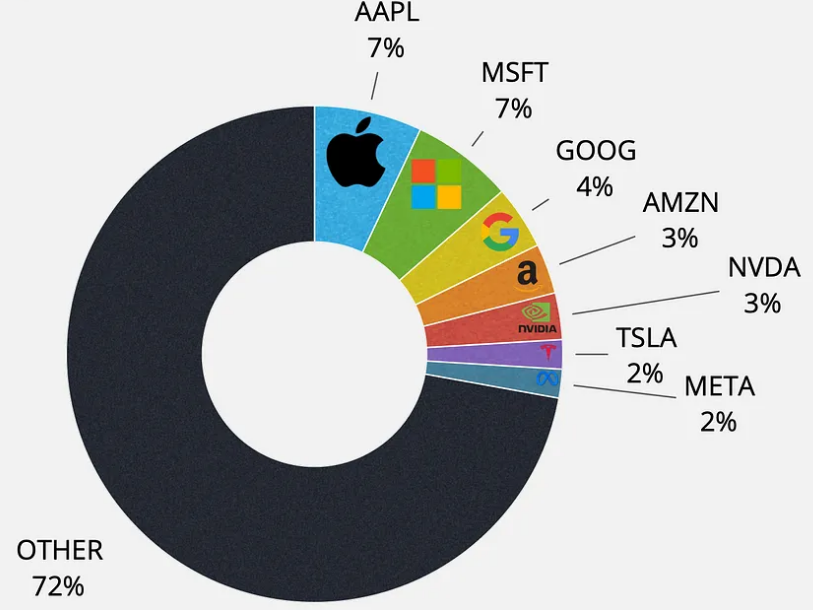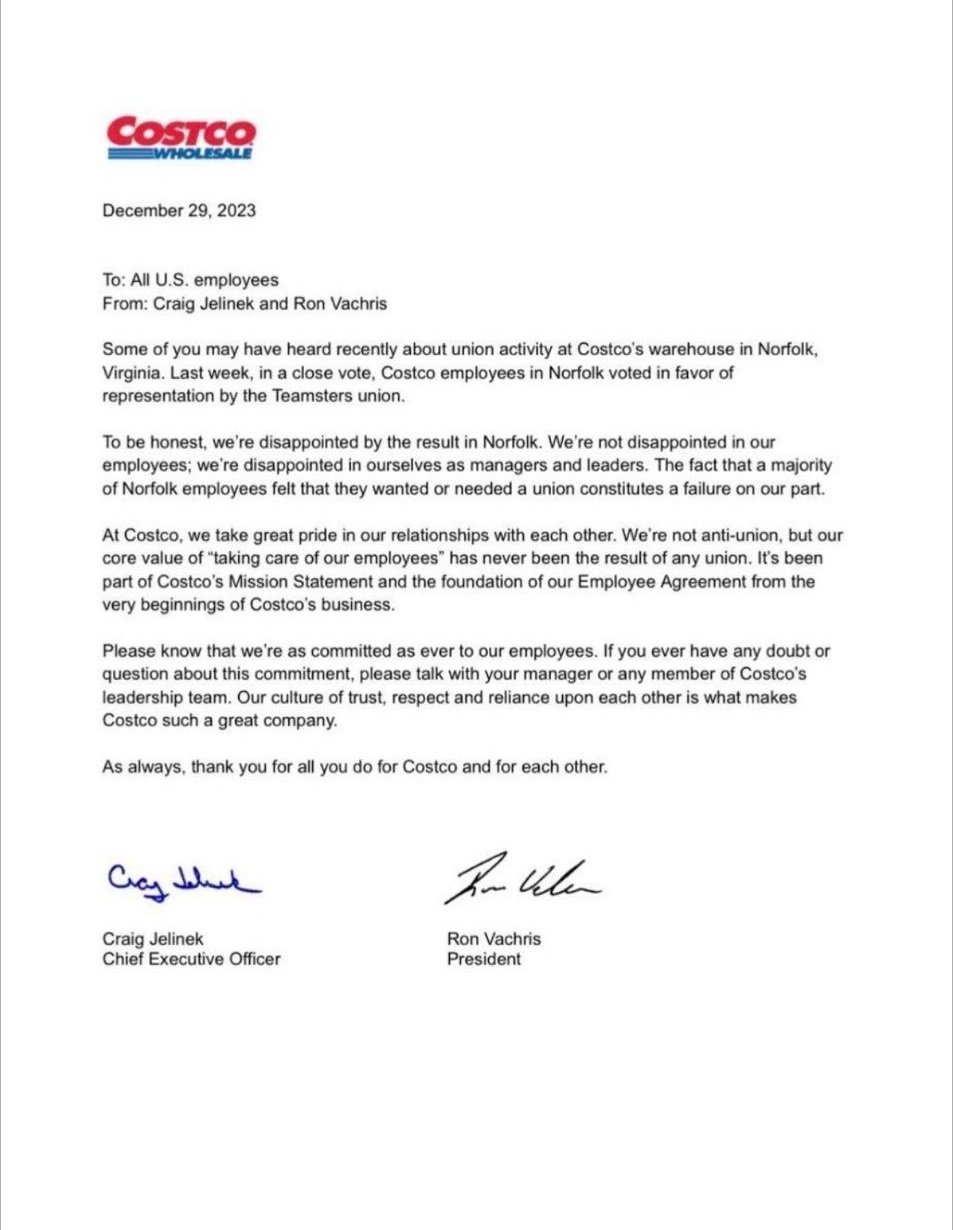Expedia CEO Email About Bathroom Cameras
Facing an unusual company situation, Expedia CEO Peter Kern tried to reassure employees they are safe at work.
Although cameras were reported in December, security officers didn’t remove them, thinking they were a battery or music player. Employees were angry about the six-week delay between the time the cameras were reported and when they were notified. The cameras might have been planted by an employee who has a history of recording others and at least 33 devices in his home.
Kern’s email is below. I wonder whether he overuses “we” and “us.” Is he really concerned for his own safety? Does he use that bathroom or a private one?
What Kern does well is acknowledge employees’ feelings and the violation of trust. But he doesn’t address the company’s violation of trust because of its poor response—only the spying employee’s.
The third paragraph seems an odd mix of criticizing news reports about the company and allowing remote work. In this sentence, Kern equates employees’ frustration and disappointment with errant news reports rather than failing company actions. Lacking more accountability and humility, he doesn’t explain company actions—or admit failings. Without a paragraph break after this sentence, he seems to further correlate bad news reports with employees’ need for space and support.
I know that reading incomplete news stories about our team’s significant efforts to protect employees and identify the individual responsible has been frustrating and disappointing during a disturbing time.
What a strange situation for a CEO to have to address. I don’t think it’s related, but this incident comes during a transition back to a former CEO.
Dear Team,
I know this has been an incredibly challenging week for our Seattle campus community and those who have visited. The news that one of our own colleagues invaded our collective privacy is highly disturbing. It has left many of us angry and feeling vulnerable. There really are no words that I can offer to make those feelings go away for any of us — it has happened despite our vigilant efforts to make sure our people, our Seattle campus, and all our offices are safe places to work and visit. It happened because one of our own, whom we trusted, abused that trust. Our team identified and fired this former colleague, collaborated with law enforcement to bring them to justice, and gratefully the Seattle Police Department has arrested the individual responsible for the pain we are all feeling.
Some of you may have observed or heard that Seattle police were in the office yesterday to execute an additional search to make sure there was no other relevant evidence to the case. They did remove some items that may be relevant to the case (mentioned in our Chief Security Officer Kurt John’s message), but no additional recording devices were found. With that done we will be closing the Seattle campus this weekend through Monday to take additional security precautions as our teams continue to work to prevent anything like this from happening in the future. We’re closing campus as we do this work as an additional precaution. The best thing we can do now is help the authorities in every way possible, use resources to heal, and learn from this experience to put additional preventative measures in place.
Let me just end by saying that while we are not the first nor sadly the last company that will likely face something like this, the violation of our collective trust is real and will take time to heal. I know that reading incomplete news stories about our team’s significant efforts to protect employees and identify the individual responsible has been frustrating and disappointing during a disturbing time. While everyone responds to events like this in their own way, I want to reassure you that if you need some time and space, we understand and want you to care for yourselves. If you need some additional time to work remotely you can do so, including during Expedia Week. I urge you to use all the resources we are making available as we continue to ensure you are supported.
I am sorry for any distress this has caused you and can only say that our teams are working tirelessly to make sure you all feel safe and secure on our campuses.
Peter
President Biden's Foray Into TikTok
President Biden needs to connect with younger voters and prove wrong the justice department’s label of him as a “sympathetic, well-meaning, elderly man with a poor memory.” But is TikTok the right platform?
His new account, bidenhq, is managed by his campaign staff, not by him personally (in case that isn’t obvious). The profile picture of Biden—with explosive, red-light glasses—might not be the image he wants to portray. If I didn’t know this was real, I might think it was a parody account.
The account is a strange mix of videos. Of the 20 videos posted so far, 12 are about former President Trump, and two compare Trump and Biden. Some of them show Trump “confused on stage” and describe Trump as “rambling incoherently.”
In the first video posted on the account, Biden is doing his best to be cool. In a clearly edited, fast-paced Q&A, Biden answers popular-culture questions. The caption reads, “lol hey guys."
During his first show back as The Daily Show host, John Stewart found his target. In addition to multiple jokes about both candidates’ age, he showed a clip from that first TikTok video. When asked whether he prefers Jason Kelce or Travis Kelce, Biden said, “Mama Kelce. I understand she makes great chocolate chip cookies.” Stewart made him look silly and, as always, the clip out of context looked worse.
At this point, the account has 156.2k followers, not a great showing compared to, for example, Taylor Swift with 24.8 million. Although Biden wants to reach younger voters on TikTok, the medium is an odd choice. The app is banned on government-issued devices so, in a way, this feels like an integrity issue. Despite security concerns that prevent the president himself from having the app on a phone, he’s using the app for his campaign.
Taylor Swift's Missing Apostrophe
So few of us care about apostrophes—until Taylor Swift gets grammar policed. Maybe students would be interested in debating how her new album title is, or isn’t, punctuated.
We know the arguments. In The Tortured Poets Department, as it stands, without an apostrophe, poets is an adjective describing the department. A New York Times writer reminds us the same construction was used for Dead Poets Society (although he puts the album and movie titles in quotes; shouldn’t they be italicized?). With an apostrophe before the “s,” the department belongs to one poet; with an apostrophe after the “s,” it belongs to more than one.
I confess to delivering an Association for Business Communication presentation on the apostrophe a few years back. I was aghast and then became obsessed with an apostrophe in the possessive its in early drafts of the U.S. Declaration of Independence (see below). Not my best presentation but probably not my worst either. (Spoiler alert, as though you’re on the edge of your seat: Thomas Jefferson was what Bill Bryson called an apostrophist. The word is, after all, possessive. More here, by William Safire in 1986.)
In Taylor Swift’s case, consensus seems to be that poets as an adjective works just fine—and that Swift can do whatever she wants.
Lyft CEO Takes Responsibility but Is Casual About Typo
Lyft CEO David Risher said “My bad” for a typo that caused shares to lift dramatically, and then fall. The error is a good example for students to see the importance of proofreading, and the company response illustrates accountability, to a point.
An extra zero found its way into a quarterly earnings release, so the company reported growth of 500 basis points (5%) instead of 50 basis points (.5%) for the year, indicating a higher margin from bookings. The error still appears on the release. A statement was added to the top, which is an appropriate way to correct an error, rather than simply changing the original:
SAN FRANCISCO--(BUSINESS WIRE)-- Fifth bulleted list, third bullet of release should read: Adjusted EBITDA margin expansion (calculated as a percentage of Gross Bookings) of approximately 50 basis points year-over-year. [instead of Adjusted EBITDA margin expansion (calculated as a percentage of Gross Bookings) of approximately 500 basis points year-over-year.].
Lyft leaders do what we expect leaders to do: They are accountable for errors. The CFO first announced the mistake on an earnings call, and the CEO took a Bloomberg Technology interview.
Risher’s word choices and speech patterns are interesting to watch. He uses colloquial speech to say, “My bad,” but then, within a second, transitions with the time-honored “but” to enthusiastically compliment the company’s good work. He also uses the classic crisis communication strategy of downplaying, as though the error is no big deal. Apology criteria include acknowledging the impact of the mistake, which he failed to do. People made investment decisions based on bad information and lost money. Typos happen, but this one caused an errant $2 billion in market cap.
The first interviewer pushed, asking whether they used AI to create the release. Risher laughed and said “no way.” Another interviewer asked whether the CFO “is safe.” Risher responded, “It’s an unacceptable error, but . . . the team is taking it super-seriously.” That’s good, but Risher didn’t present it that way initially: His word choice and demeaner don’t match the seriousness of the event.
Of course, Risher’s response could be worse. He could not take an interview, or he could blame the CFO or others, who are ultimately responsible for proofreading. Instead, he said he’s ultimately responsible for all company communication, which is true.
Stanley Responds to Lead Concerns
Stanley cups are all the rage, but a recent lead scare caused the company to respond. People are posting their home lead tests online, which raises questions about evidence.
The company responded to concerns with a short statement on its website, which students can analyze. The main point is somewhere in the middle, after the explanation. They acknowledge using lead according to industry standards but assure us that it’s “inaccessible.”
TikTokers and others are showing positive home tests, but a BBC article quotes NYU Public Health Professor Jack Caravanos, who confirms Stanley’s claim:
“There appears to be lead, according to the report, but I had trouble detecting it and wasn’t able to detect it using state-of-the-art equipment." He says this is probably because the lead was "too deep inside the unit," meaning it would be very tough to be exposed to it or ingest it.
He does express disappointment that Stanley is using lead at all. The company isn’t complying with California’s Proposition 65, which requires companies to disclose any amount of lead. In the statement and on the website FAQs, Stanley attests, “all Stanley items comply with Prop 65 and FDA requirements,” but they didn’t specifically disclose that products use lead—until they posted the statement addressing concerns.
Students might have their own experience with Stanley cups and can discuss how they reacted to videos. Are they swayed by them? Has fear driven them to discarded their custom-engraved, nail-polish-matched Quencher? Does a public health professor’s test change their opinion?
Despite the company’s lack of complete transparency, it would be unfortunate if sales take a hit because of false information. Maybe the dramatic sales increase for Stanley—a little-known thermos company turned $750-million internet craze—made it vulnerable to deceptive claims.
Videos of the Layoff
First, we read employees’ public posts about their layoff, commiserating with others. Now, we watch videos leading up to and during layoff.
In one video with 3.8 million views, we see jewishmillenial, a tech employee, await her layoff meeting at home. What’s useful to organizational leaders is to see the other side of the process—the employee’s perspective. We see her dread after receiving a “mysterious” 30-minute meeting scheduled with her boss’s boss and others in her group, one by one, “disappearing off of Teams.”
She gives us a periodic countdown to her being laid off, at one point, wondering why the company doesn’t just schedule a meeting for everyone instead of multiple individual meetings they have to wait for. Others complain about mass layoff meetings and having all technology immediately cut off. They believe the layoff is “inconsistent” or random and not performance based.
No one approach is perfect for everyone. A performance-based layoff at Cloudfare and other companies are also criticized. The Cloudfare one didn’t include the employee’s manager—just HR people—so that didn’t go over well. The HR representatives couldn’t answer her questions about why she was laid off or what the performance metrics are. The CEO did admit that managers should be involved in these meetings and that employees shouldn’t be blindsided by news of their underperformance. Of course, we don’t know how clearly performance feedback has been communicated in these cases, but we could say that the immediate manager lacks accountability. More typically, managers are involved in these meetings, whether performance based or not.
What makes us watch these videos? The voyeuristic pleasure of the layoff meeting is undeniable, and perhaps we feel a mix of empathy for the person, gratitude for still having a job, and fear of losing our job. For business communicators, they’re a reality show for one of the more difficult meetings a manager (or HR) will have, and we can learn how to plan and facilitate these interactions better.
Zuckerberg Impromptu Apologizes, Defends Progress
Tech CEOs faced senators’ tough questions and accusations about child sexual abuse material (CSAM) on their platforms. Rarely do we see an impromptu apology, but Mark Zuckerberg directly faced families during the hearings.
Lawmakers held little back with the CEOs of six major tech companies. One of the harshest was Sen. Lindsey Graham, who said, “You have blood on your hands.” Several families were present, holding photos of children who were harmed or killed as a result of online abuse.
At one point, Sen. Josh Hawley asked if Mark Zuckerberg “would like to apologize to the victims who have been harmed by your platforms. [To the audience] Show him the pictures. [Back to Zuckerberg] Would you like to apologize for what you have done to these good people?” Understandably, Zuckerberg looked hesitant and awkward, as photographers swarmed around him. He turned around to face the families and said, “I’m sorry for everything you have all been through. No one should have to go through the things that your families have suffered, and this is why we invested so much.” The scene is both heartbreaking and farcical.
Parents didn’t seem to appreciate the apology; one said, “He had a gun to his head,” meaning it wasn’t sincere. But after Hawley’s insistence, he would have looked callous to refuse an on-the-spot apology. He was set up. Considering the situation, he did OK.
Although Zuckerberg’s view is that they have “invested so much,” people want to see more. An internal email revealed that Zuckerberg rejected a request to add 45 staff to the effort.
At least a couple of lawmakers blamed themselves for not passing legislation after dozens of hearings. Some blamed the tech companies’ resistance and lobbying efforts. Zuckerberg’s position is that the data, “on balance,” shows positive outcomes of the platforms. He also said, “Overall, teens tell us this is a positive part of their lives.” As we teach in business communication courses, averages are not always the most useful information.
The conversation is tiring after all these years. Zuckerberg’s integrity is damaged because of his failed promises and because internal documents are inconsistent with them. But the senate hearings aren’t inspiring much movement—and are becoming a circus.
Soccer Players "Walking Off" After Racist Comments
Not a sports watcher, I’m fascinated reading how soccer players handle racist comments during the game. Some players are walking off the field amid calls for greater penalties.
A writer for The Athletic explains what led to the AC Milan (the football team) to walk off:
[Mike] Maignan led his AC Milan teammates off the pitch at Udinese on Saturday after being racially abused twice from the stands. [Kasey] Palmer was racially abused by a Sheffield Wednesday fan towards the end of Coventry City’s 2-1 win at Hillsborough.
AC Milan posted support on X: “There is absolutely no place in our game for racism: we are appalled. We are with you, Mike. #WeRespAct”
Of his experience, Palmer said, “I’m black and proud, and I am raising my three kids to be the exact same. I’ll be honest, it feels like things will never change, no matter how hard we try,” and “Couple fans doing monkey chants don’t define a fanbase. I appreciate all the love and support I’ve received.”
Maignan called on authorities to do more. He also posted these thoughts on X:
It was not the player who was attacked. It's the man. He's the father of the family. This isn't the first time this has happened to me. And I'm not the first this has happened to. We issued press releases, advertising campaigns, protocols and nothing has changed. Today, an entire system must take responsibility. . . .
The FIFA president made a statement condemning racism, including, “No to racism! No to any form of discrimination!” But many are calling for harsher punishments in addition to the current process:
FIFA’s guidance follows a “three-step” policy: at the first incident of racism, the referee should report it to the “home club safety officer via the fourth official”; at the second, the referee may suspend the match “allowing the safety officer and police to deal with the perpetrators”; it’s only at the third incident that the referee is empowered to abandon the match.
As we can expect, not everyone agrees, with some calling for players to do the equivalent of “man up” but with more literal expressions I had to look up and won’t write. Students could weigh in on this situation, and a discussion could lead to, but doesn’t have to, what’s acceptable on college campuses.
This situation raises issues of integrity for the league. A writer for The Athletic says of FIFA’s president, “Now it’s time for him to follow up his words with action.” This is a call for words and deeds to match, or for consistency, a key component of integrity.
The Visual Pull of Tech Stocks
Line charts show how the “Magnificent Seven” tech stocks—Alphabet, Amazon, Apple, Meta, Microsoft, Nvidia, and Tesla—affect the S&P 500. Students can analyze the potential audience and objective of each of these visual displays, find others, or create their own. Hover over for comments about each, and click on the slide for the original source. The data represents different timeframes, so the charts aren’t quite comparable.







Students also might be interested in evaluating whether Tesla should remain part of the Magnificent Seven. Some believe it’s lackluster performance makes it unworthy of the designation.
Niecy Nash Thanks Herself in an Emotional Speech
The Emmy award audience and viewers love watching emotional speeches. Niecy Nash thanked herself in her acceptance speech, which students can analyze, given the context.
Nominated for five Emmys for her work in 2023, Nash won for Outstanding Supporting Actress in a Limited or Anthology Series or Movie for Dahmer—Monster: The Jeffrey Dahmer Story. When we assess character, particularly an aspect of character like humility, we consider the entire context. Nash is crying as she begins her speech, saying, “I’m a winner, baby!” She was nominated for several Emmy awards over the years and won the last one in 2010. It’s been a while.
During her interview with Gayle King and Charles Barkley on CBS, she got emotional describing the work it took for her to be successful and how she felt proud of herself. Her difficulty is clear from her speech, too, when she thanks her “better half, who picked me up when I was gutted from this work. Thank you.” Then she says, “And you know who else I want to thank? I want to thank me.” She describes believing in herself and closes by acknowledging Black and brown women who went “unheard but over policed.” She mentions a few by name.
The context of her speech also is the historic underrepresentation of women of color in film, in TV, and as entertainment award winners. Humility can be defined as being neither below or above others. Nash expresses gratitude for being at a high competitive level and for being rewarded as she deserves to be. From another actor, the speech could certainly sound arrogant. But hers is taken well, and we see the audience enthusiastically applauding her.
China Changes Youth Unemployment Measure
After a five-month lapse, China reported youth unemployment data, which looks better because of new metrics. The change raises questions about data integrity and reporting.
According to China’s National Bureau of Statistics, the unemployment rate of people between 16 and 24 years old dropped from a high of 23.1 in June to 14.9 in December. But the rate doesn’t mean more young people are employed. The Bureau now excludes students enrolled in school, even if they’re seeking part-time employment. Reports also will now separate people between 25 and 29 from those between 25 and 59. A record number of college graduates are having a particularly difficult time finding jobs, partly because of restrictions on tech, real estate development, and education fields and because of a slow recovery from the pandemic, which Chinese officials seem reluctant to admit.
The youth data change might not have been as alarming if China hadn’t stopped reported data after that record high in June.
Students might discuss the significance of these changes and compare how China reports jobless data to U.S. methodology (see U.S. Bureau of Labor Statistics). This situation is a good project for students to dig into the data and also analyze, for example, differences between urban and overall rates.
Students also can find or create charts to visualize the change over time. They’ll likely find mostly line charts like the one at right that shows the urban rate over the past two years. As many do, this chart has a truncated Y axis, exaggerating the differences (and yet, one percentage point is a lot of people out of work).
Jelly Roll Speaks Out and Demonstrates Character
Not often do we see a rapper turned country music artist in front of congress. Students might be interested in discussing Jelly Roll’s character and analyzing his persuasive statement.
With a history of addiction, selling drugs, and jail time, Jelly Roll is open about his past. His hit “Save Me” (and others), his inspiring speech when he won the Country Music Award for New Artist of the Year, and his tearful video when he learned he received two Emmy nominations demonstrate his vulnerability and gratitude for his new life. We learn more about Jelly Roll during a CBS Sunday Morning interview, when he talks about being in therapy and says, “I think it’s cool to think about vulnerability that way—that we can all grow together, and that it’s OK to not have it figured out. . . .” Correspondent Kelefa Sanneh also noted his authenticity, among other character dimensions: “Songs like ‘Song of a Sinner’ and ‘Need a Favor’ make fans feel as if they really know him and believe in him.”
In his testimony to encourage lawmakers to pass a bill to sanction drug traffickers, Jelly Roll uses several persuasion strategies we teach in business communication classes. With a tattooed face, Jelly Roll started with a joke about having a microphone for performing. Then he captures attention with data about the number of people who will die from drug overdose during his five-minute testimony. He uses other logical appeals, including this poignant analogy about the average number of people who die every day in the United States of fentanyl overdose:
Could you imagine the national media attention it would get if they were reporting that a plane was crashing every single day and killing 190 people?
Students may have a lot to say about the speech, which demonstrates credibility, logical argument, and emotion appeal. In some respects, he risks little. He is vulnerable, speaking of his wife’s addiction and a past he might prefer to forget, but his advocacy is unlikely to affect his career negatively: he’s getting positive publicity and his role might endear people toward him. Still, he demonstrates integrity by being consistent in his music and in his life. He is making “living amends,” as people do in Twelve Step programs: taking positive steps when apologies aren’t possible or enough.
Disclosing an Illness
Defense Secretary Lloyd J. Austin III delayed telling the White House about his prostate cancer, which raises questions about whether or when a corporate executive should disclose an illness.
At a news conference on January 9, Pentagon Press Secretary Gen. Patrick Ryder apologized for failing to notify proper channels when Austin was hospitalized:
I recognized that I should have tried to learn more and to press for an earlier public acknowledgement. So I want to offer my apologies and my pledge to learn from this experience. And I will do everything I can to meet the standard that you expect from us.
He also said, “Secretary Austin has taken responsibility for the issues with transparency.”
Leaders might naturally avoid disclosing an illness. A palliative care doctor said, “It’s very human to not want to have yourself sort of flayed open for the world to see.” He’s describing vulnerability, or emotional exposure. Others say it’s a coping mechanism, trying to control the uncontrollable. Compartmentalization—to a point—is a useful way to deal with a diagnosis. But experts warn that being too secretive can lead to isolation and may not get people the help they need.
Austin’s situation reminds me of others who have disclosed illnesses for good reasons. Alex Trebek, long-time Jeopardy! host announced is illness on air. He described his rationale for the message about his stage 4 pancreatic cancer diagnosis: to be “open and transparent” and to avoid “overblown or inaccurate reports.” His diagnosis has a particularly low survival rate, so the decision might have been easier for him, as he accepted his likely death. For different reasons, Senator John Fetterman revealed his mental health struggles, which was lauded as courageous and a way to normalize depression.
For corporate CEOs, the decision to disclose health issues is complicated because of the potential impact on customer, employee, or investor confidence. Famously, Steve Jobs downplayed and delayed disclosing his pancreatic cancer and other health issues, which was highly criticized for its impact on, for example, investor decision making, and was a troubling situation for some board members.
According to this Harvard Law article, “Best Practices for Disclosing Executive Health Issues,” the obligation for public disclosure is limited:
If a senior executive is incapacitated and therefore unable to perform his or her duties, disclosure is required (particularly if the executive performs certain roles [9] or is otherwise reasonably believed to be critical to the success of the company).
In addition to reviewing the risks and approaches, including a communication plan, the article authors provide examples of companies that gave full disclosures, mixed disclosures, and “The Silent Treatment.” They conclude: “Most risk arises from partial disclosures or “half-truths”—which should be avoided. Sometimes silence with respect to executive health is the best policy.” Maybe, but I’ll also quote a university communication executive: “The trust will come out.”
Corporate executives have difficult choices in these situations. In this case, Austin didn’t really have a decision to make: he should have followed protocol and did not.
Costco Accepts the Union with Humility
In a great display of humility, Costco management wrote to employees about the new union—a good, positive message to share with students. The CEO and president co-signed the letter to acknowledge the union and reinforce their values, which, they admit, may not have been upheld:
[W]e’re disappointed in ourselves as managers and leaders. The fact that the majority of Norfolk employees felt that they wanted or needed a union constitutes a failure on our part.
The Costco leaders made a good choice if for no other reason that the vote is done, so they might as well accept it. Also, they’re right about the reason for all union activity: employees aren’t getting what they want or need from management and seek outside help.
But few leaders admit this. Starbucks and Amazon, in particular, fought union activity to the extent that the National Labor Relations Board accused Starbucks of interfering with employees’ rights and Amazon of not bargaining in good faith.
Microsoft hasn’t been entirely antagonistic against union activity. After acquiring Activision Blizzard last year, it entered into a neutrality agreement with the Communications Workers of America. This meant that employees were free to choose a union without management’s interference (although that is the law). Employees did vote for the union, Microsoft’s first in the United States, and a spokesperson commented:
In light of the results of the recent unionization vote, we recognize the Communications Workers of America (CWA) as the bargaining representative for the Quality Assurance employees at ZeniMax. We look forward to engaging in good-faith negotiations as we work towards a collective bargaining agreement.
A tech writer made a good point about who defines “good faith.” In response to a similar (but more defensive) Apple statement about its union, he wrote:
To some extent, it could be said that Apple now has a spotlight on its actions at the negotiations—whether it meets the union on the union’s definition of good faith negotiations, or whether it continues to stand on its own record of positive remuneration in spite of the union’s negotiating position.
We’ll see more company responses as union activity gains speed for the first time in decades, particularly in tech and retail industries.
Boeing Crisis Comms Need Work
Once again, Boeing is in crisis communication mode trying to explain plane failures. Messaging could sound more authentic and compassionate.
After part of the fuselage fell off an Alaska Airlines Boeing 737 Max 9 plane, United found loose bolts needing “additional tightening” on the same model. In a flashback to the horrible deaths caused by MAX planes five years ago, the FAA grounded 171 of the planes.
On its website, Boeing lists daily “Updates,” but none of them acknowledge the fear (and of course, the inconvenience) to passengers. The audience for these messages is the public, and communications to passengers seem to be missing. One update restates what CEO Dave Calhoun said in a company-wide meeting to employees:
When it comes to the safety of our products and services, every decision and every action matters. And when serious accidents like this occur, it is critical for us to work transparently with our customers and regulators to understand and address the causes of the event, and to ensure they don’t happen again. This is and must be the focus of our team right now. I am deeply grateful to our colleagues who have been working tirelessly on our company’s response over the past two days.
We will spend time together Tuesday talking about our company’s response to this accident, and reinforcing our focus on and our commitment to safety, quality, integrity and transparency. While we’ve made progress in strengthening our safety management and quality control systems and processes in the last few years, situations like this are a reminder that we must remain focused on continuing to improve every day.
On January 9, a video of Calhoun talking with employees was posted on the site. In this message, he found some emotion, referring to the shocking pictures, which reminded him that he’s a parent and grandparent. His delivery style is natural, but much of the message sounded canned. Imagine if he said “honesty,” instead of “transparency,” which he announced like a section heading:
[Honesty.] Let me talk a little bit about what I did today and what I’ll keep doing with members of our team who are with us today. We’re going to approach this, number one, acknowledging our mistake. We are going to approach it with 100% in complete [honesty] every step of the way.”
Transparency seems best achieved through actions rather than promises—like safety.
Unfortunately for Boeing, other media sources aren’t reflecting well on the company. Several passenger TikTok videos show the missing part of the plane. (Passengers are uncharacteristically calm, perhaps because this is one of those situations when they have absolutely no control and no choice but to surrender.) A former employee whistleblower told CNBC, “It really wasn’t a surprise, sadly.”
In a CNBC interview, Corporate Communication Professor Paul Argenti criticized Boeing’s “focus on profits rather than safety, and you need to do both.” He encouraged a greater sense of urgency in [CEO Dave] Calhoun’s response: “I don’t see him saying the kinds of things that would give me confidence in the organization.” Argenti said that we need to know what went wrong and what the company will do to fix it, and “They need somebody new. . . a hero to come in and save this company.” The former CEO also struggled with communication.
Air Alaska showed a bit more compassion towards customers on the flight, but it’s at the end of the statement:
A statement from Alaska Airlines CEO, Ben Minicucci:
At Alaska Airlines, safety is our foundational value and the most important thing we focus on every day. Following tonight’s event on Flight 1282, we have decided to take the precautionary step of temporarily grounding our fleet of 65 Boeing 737-9 aircraft. Each aircraft will be returned to service only after completion of full maintenance and safety inspections. We anticipate all inspections will be completed in the next few days.
I am personally committed to doing everything we can to conduct this review in a timely and transparent way.
We are working with Boeing and regulators to understand what occurred tonight, and will share updates as more information is available. The NTSB is investigating this event and we will fully support their investigation.
My heart goes out to those who were on this flight – I am so sorry for what you experienced. I am so grateful for the response of our pilots and flight attendants. We have teams on the ground in Portland assisting passengers and are working to support guests who are traveling in the days ahead.
-Ben
FAFSA and Other Form Problems
A parent describes his experience completing the “simplified” Free Application for Federal Student Aid (FAFSA), which was supposed to be easier than the old college financial aid form but still illustrates business communication problems.
The parent received only intermittent access a couple of months after the form was planned to be available. He complimented the clean design, friendly user interface, and fewer questions than on past forms. The biggest issues seems to be that the promised “soft launch” was half-baked—too late, not consistently available, and buggy. He suggested waiting until next year, when it could be fully available in the summer to give families more time.
The Federal Student Aid department’s launch announcement warns people not to “fill out the form immediately when the soft launch period opens” and includes a long list of potential problems. So the reporter might have headed the advice.
Form changes are guided by the FAFSA Simplification Act, which the U.S. Department of Education explains in a message to an unclear audience. The process introduces a new acronym (SAI), and the message is repetitive and includes information that possibly no audience would find useful, for example,
This data exchange has been made possible by the Fostering Undergraduate Talent by Unlocking Resources for Education Act (FUTURE Act), which we’ll implement alongside FAFSA simplification starting with the 2024–25 award year.
Students might rewrite this message to an audience of students and their parents, explaining just a little of the rationale for the changes but focusing primarily on the benefits and what to expect. To the department’s credit, a virtual assistant is offered with links to other pages. Students also could analyze communications on this page, whose audience is more clearly parents and students. But I find the video slow and devoid of information.
Communication Issues Around Harvard President Resignation
Harvard President Claudine Gay resigned after weeks of pressure and speculation. The communication issues around this situation are too weighty to properly cover in one blog post. But here are a few angles if faculty want to venture into the topic with students.
Bill Ackman’s calls for Gay’s resignation were the most fierce, and his antagonism started before October 7. His long, celebratory post provides his version of Harvard’s failings, including its DEI programs, and suggests that the entire Board resign. We see his business perspective, comparing university growth to business standards. He also writes, “I would suggest that universities should broaden their searches to include capable business people for the role of president.” I don’t categorically disagree, but I wonder whether he has anyone in mind.
Gay’s resignation letter is short and polite. She shares “Personal News” and closes with a forward-looking sentiment:
“As we welcome a new year and a new semester, I hope we can all look forward to brighter days. Sad as I am to be sending this message, my hopes for Harvard remain undimmed. When my brief presidency is remembered, I hope it will be seen as a moment of reawakening to the importance of striving to find our common humanity—and of not allowing rancor and vituperation to undermine the vital process of education. I trust we will all find ways, in this time of intense challenge and controversy, to recommit ourselves to the excellence, the openness, and the independence that are crucial to what our university stands for—and to our capacity to serve the world.”
The Corporation’s letter is similarly diplomatic, thanking Gay for her “deep and unwavering commitment to Harvard and to the pursuit of academic excellence.” They criticized her attackers:
“We do so with sorrow. While President Gay has acknowledged missteps and has taken responsibility for them, it is also true that she has shown remarkable resilience in the face of deeply personal and sustained attacks. While some of this has played out in the public domain, much of it has taken the form of repugnant and in some cases racist vitriol directed at her through disgraceful emails and phone calls. We condemn such attacks in the strongest possible terms.”
Al Sharpton is one of many who also defended Gay and criticized Ackman directly, announcing a protest outside his office. He blamed racism: “This is an attack on every Black woman in this country who’s put a crack in the glass ceiling. It’s an assault on the health, strength, and future of diversity, equity, and inclusion . . .”
Gay’s opinion essay in the New York Times describes racist attacks against her and the bigger picture of her experience. She defends her scholarship, emphasizing that her research and the contribution of her work were never at question. She discusses courage, a character dimension worth talking with students about in their own communication.
Gay’s plagiarism might deserve class attention. Examples of minimally rewritten passages in her work could serve as a teaching tool about standards for business communication and other students. This might also serve as an opportunity to put the criticism in context, as she does herself in the NYT piece.
How to Spot a Fake Review
Fake online reviews are unfair to competitors and can cause bad purchase decisions. Students benefit from knowing how to spot these reviews, and the topic raises bigger questions about integrity.
People depend on online reviews for purchase decisions, but 30-40% of reviews are considered unreliable. A CNBC article suggests ways to avoid being duped:
Beware of five-star reviews, particularly without text or right after a negative review appears.
Check reviewers who have locked profiles, post only one time, use a stock photo, or post about businesses in multiple countries.
Don’t be fooled by detailed reviews with photos, which can still be fake.
Other sources suggest evaluating the writing:
Repeated mentions of the product or brand name
Language you would see in an ad or press release
Unnatural language (for example, “robust wireless data transmission”)
But some of these strategies require digging and might not be practical for someone perusing Airbnb or looking for a mop. Some research found that language models do a better job than humans in detecting fake reviews, so that might be the best defense.
One tool, Fakespot, a browser add-on, promises to flag fake reviews on Amazon and other sites using AI technology. The Hopeless Geek analyzes tech products and gave Fakespot a mixed review. His point is that the program analyzes reviews, not products. For example, Samsung was flagged as possibly being "deceptive,” but Geek argues the conclusion is based on how the reviews are written. Amazon also protested Fakespot and convinced Apple to remove the app, which it claimed was wrong about products 80% of the time.
Fakespot warns us about the integrity of fake reviews while developing its own credibility as an app. The website uses several strategies that students would recognize to demonstrate ethos; for example, we see “trust” and “truth” several times, reputable company logos (those the app covers and news articles about the app), and testimonials. The site also uses social proof (“millions of consumers like you”) to convince us to install the add-on.
Spotting fake reviews is complicated. If ChatGPT writes a review for someone feeding it the information, is it fake? In a letter, US Public Interest Resource Group (PIRG) encourages the U.S. Federal Trade Commission (FTC) to do more to investigate and monitor websites. Complicated problems require multiple solutions—beyond what individual users can do.
New Slack CEO's Message to Staff
A friend suggested I post more positive examples, and I’m glad for the challenge. If you find others, please send them along. This one appeared on LinkedIn from Slack’s new CEO Denise Holland Dresser as a summary of “what’s top of mind.”
With cute but tasteful emojis, Dresser writes about her gratitude for the team, productivity tools of the platform, happy customers, work efficiencies, and the future. Yes, it’s a feel-good, promotional message, but Dresser is concise and grounded. Her personality comes through just enough, without spilling over the screen. Her subheadings aren’t quite parallel, but I’m picky. Students benefit from seeing examples of positive messages, and this is a good one to share.
Dresser left Salesforce in November, along with several other departing executives and laid off employees in the past year. Slack, too, has had its share of turnover: Dresser will be the third CEO in about a year. But none of that matters now. Dresser is all-in at Slack or, at least, that’s what her message says.
Hasan Minhaj Defends Embellishing Stand-Up Comedy
The comedian Hasan Minhaj isn’t cowering after a New Yorker reporter fact checked and criticized his Netflix series Patriot Act and other performances. His response is an unusual approach for crisis communication. Students might discuss issues of integrity and analyze evidence in this situation.
In her article, “Hasan Minhaj’s ‘Emotional Truths’,” Clare Malone wrote,
[A]fter many weeks of trying, I had been unable to confirm some of the stories that he had told onstage. . . . Still, he said that he stood by his work. “Every story in my style is built around a seed of truth,” he said. “My comedy Arnold Palmer is seventy per cent emotional truth—this happened—and then thirty per cent hyperbole, exaggeration, fiction.”
In part, Malone’s focus was on the consequences of Minhaj’s fabrications (he might say “embellishments”). When comparing his stories to George Santos’s, Minhaj says Santos’s are "pointless,” whereas his have societal value, which gives him moral standing. Students can discuss how much is too much “stretching the truth.” How might standards of integrity differ for comedians, politicians, organizational leaders, entrepreneurs, job applicants, etc.?
People make difficult decisions about whether and how to respond to criticism. Minhaj fought back. A New York Times writer summarizes Minhaj’s response well:
Typical crisis management dictates you should move on, not fixate. But in our attention economy, where the most popular Netflix specials of the past year featured Chris Rock talking about the Slap and John Mulaney joking about going to rehab, comedians are wise to consider Rahm Emanuel’s famous political advice: Never let a good crisis go to waste. Minhaj split the difference. He did not linger on the story but dedicated a solid chunk of jokes to it that got one of the biggest responses of the night. There were moments when I even thought this scandal might be the best thing that ever happened to him.
During a recent Beacon Theater show, Minhaj quipped to the audience, “Don’t fact check me.” He said of the New Yorker report, “I got caught embellishing for dramatic effect,” and said it was too bad it was such “a dorky scandal” and not one involving, for example, child abuse.
In a 21-minute video watched, so far, 1.9 million times, Minhaj addressed criticism head-on, showing headlines and a Bill Maher clip. He apologized to those hurt by his routines and addressed three stories in detail. He distinguished between what really happened and how he changed details to create a funny/poignant story. Supporting his points, Minhaj played audio from the interview with the New Yorker reporter. As he acknowledges during the video, his explanations are a bit much (saying at one point, “If you’re still here,” and, I admit, I dropped off soon after). But he does provide good evidence of the reporter ignoring or missing information. (For a deep dive of disputed facts, read this Slate analysis.) Naturally, Malone posted a short statement on X, defending her reporting.
To his credit, Minhaj has enough perspective to conclude with a main point (direct organization plan—up front!): he didn’t “fake racism.” Students can draw their own conclusions and whether they are convinced by Minhaj’s presentation of the evidence.
This situation gives students a different perspective on crisis communications. Minhaj highlighted rather than downplayed criticism, which may have avoided his getting “cancelled” and might even elevate his reputation.














